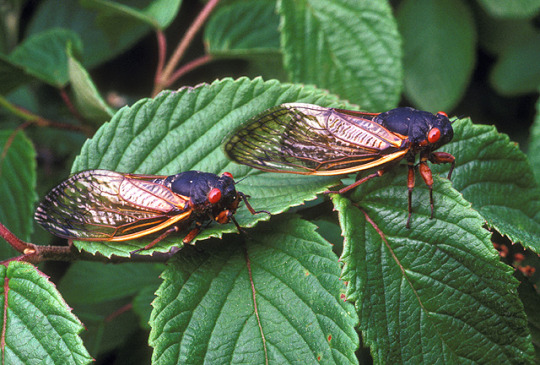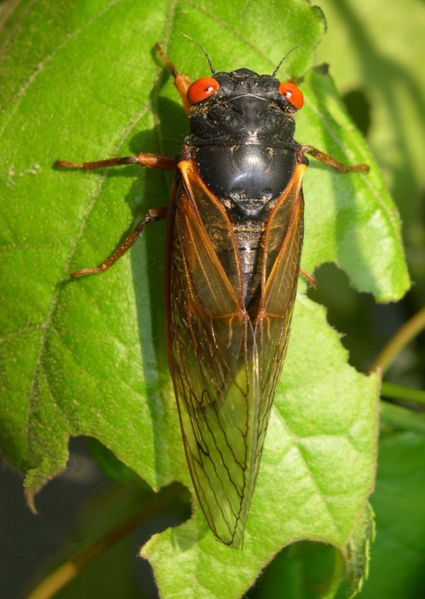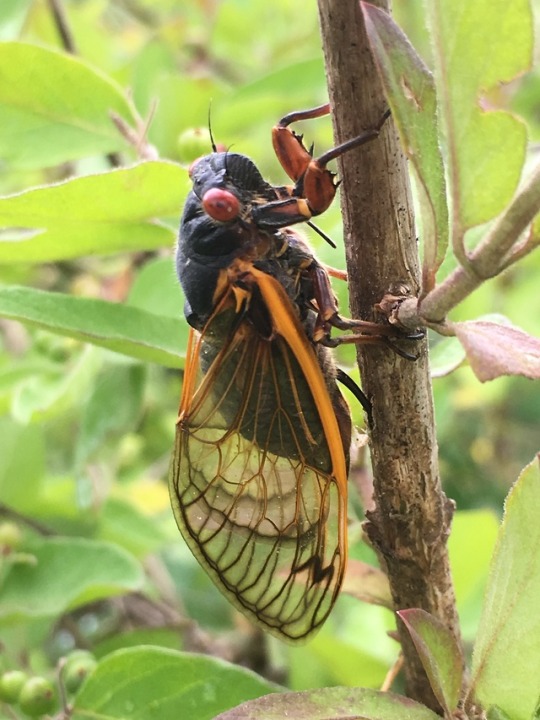
Millions upon millions of tiny cicada nymphs are being born. The periodical cicadas that emerged in our area (called “Brood VIII”) earlier this summer mated and laid eggs in the twigs of woody plants. Cicadas do not feed on twigs; they pierce the twigs on the underside, with a knife-like egg-laying tube called an ovipositor, and lay 10 to 20 eggs per incision. In the photo above, you can see the ovipositor behind the female’s back leg, inserted into the twig. At rest, the ovipositor would extend the length of the abdomen, so this one is about half embedded in the twig. In mid or late July, those eggs will hatch and the tiny nymphs will fall to the ground. They burrow down to find roots, where they will remain for 17 years, sucking plant juice.
Females can make dozens of separate incisions to lay hundreds of eggs in total. Because the cicadas need to leave their offspring on roots that will persist for 17 years, they prefer laying eggs in trees rather than shrubs, and tend to pick harder species, such as oaks, rather than softer woods like tulip poplar. Although they can feed on evergreen roots, the resinous nature of the sap in the twigs tends to suffocate the eggs, and they rarely lay eggs in evergreens. They can also feed on grass roots, and a big tree above a lawn becomes a popular egg-laying site. The many separate wounds on the twig interrupt water flow from the roots, and the twig often breaks or dies.
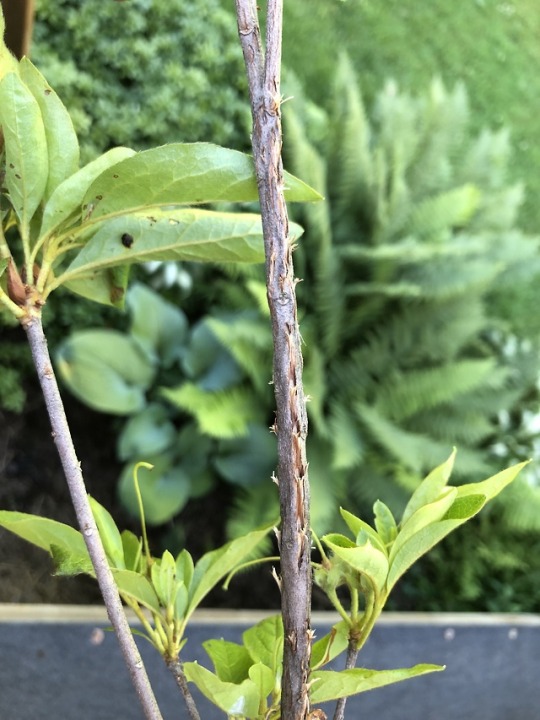
These damaged twigs are called “flagging” by cicada biologists, and they are a clear indicator of the density of females at a site. This red maple over a lawn shows extensive flagging. A big tree may be supporting hundreds of thousands of eggs.
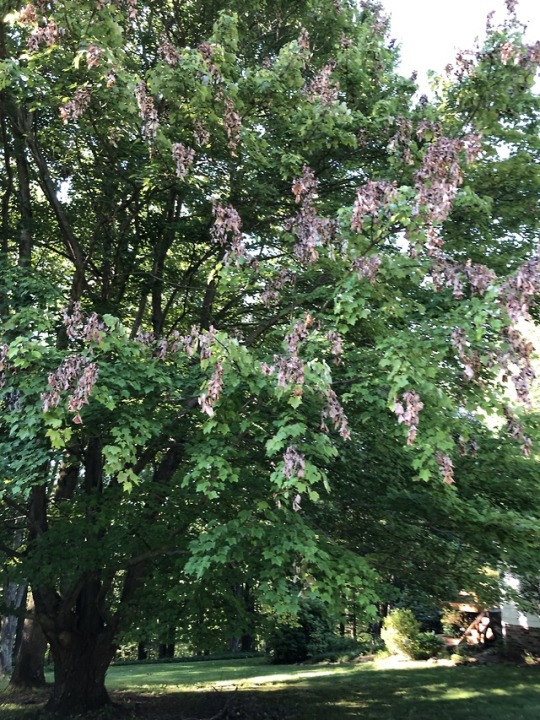
Despite the obvious damage to the tree, it appears that most trees do not suffer much unless they are little saplings. In fact, fruit tree farmers in the 1800s reported that their trees produced better crops the year after this natural pruning process. Another benefit of the cicadas is that the millions of emergence holes open up the soil for air and water penetration and provide an avenue for nutrients at the top to pass into lower soil layers. Although many people find the mass emergence of periodical cicadas to be annoying, they represent an inspiring and beneficial piece of our ecosystem, unique to eastern North America.
John Wenzel is the Director at Powdermill Nature Reserve, Carnegie Museum of Natural History’s environmental research center. Museum employees are encouraged to blog about their unique experiences and knowledge gained from working at the museum.
